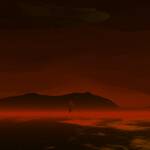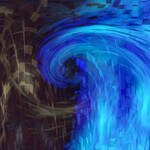Company History As Recollected In 2021 - Part 1
Table of Contents
Chris here! My memory is sometimes spotty, and this company has done a LOT of different things. If I get any details wrong, please feel free to correct me. In the meantime, I’m going to walk you through the history of the company in enough detail to answer the questions I get most frequently from fans and press, with the benefit of lots of hindsight.
This is novella-length, spread apart multiple pages, so you can skip around if you are looking for something specific.
My Background
The original AI War didn’t come out of nowhere… and yet it sort of did. I was 27 when that game released, and I wasn’t trying to break into the industry or anything.
Wait, what?
Let’s back up for just a quick bit.
I have a history of being a gamer that goes back to the early 80s and the ATARI 2600. No surprises there. The first game where I really fell in love with level editing was 1989’s Demon Stalkers. That’s an excellent title for the time it came out, but it is pretty much forgotten to time at this point. Later on I got into doing DnD-style adventures in Forgotten Realms Unlimited Adventures (FRUA), Zelda-like level design in Graal, and first person shooter level design in Duke Nukem 3D, Quake 2, and Counter-strike. I was big into modding NES by being a “romhacker” in the late 90s, and my first magazine exposure (EGM) and first two slashdottings were for that work. In 1999 or so, I was among the first of the griefer-style Mario level designers that we now call Kaizo; I’m not entirely sure, but I might have been the first. At any rate, I was just messing around and it was all a big hobby to me. I was involved in dozens of projects, many of which were never all that popular, and a few of which were quite popular.
I also discovered Bryce and Alice — early 3D modeling software, not people — in 1998. I wound up spending a lot of the rest of my hobby time working on art in Photoshop, Blender, Carrara, Vue, Hexagon, DAZ, Poser, GroBoto, and I don’t even remember what else. Again, this was just a hobby. I also enjoyed sketching, and whittling wood, and I kind of mentally lumped all these things into the same category. I did some 800 pieces in the span of about 9 years, and most of them were not very good.
My real passion was writing. Like so many others, I wanted to make the next great American novel, and change how people think about the world. I wanted to do it in a science fiction setting, but other than that I was the same as all the rest. I intensely pursued that endeavor from 1996 through 2008, finished several novels amidst piles of incomplete ones, and failed to get an agent or publisher for any of them. By the end I was getting decidedly better at it, but I realized I didn’t really enjoy the process. The two novels that I completed were called Cayenne and The Guardian. Agent extraordinaire Matt Bialer passed on the latter right about the time I later learned he had The Name of The Wind on his desk. Uh… yeah, he made the right choice.
There was one other critical component, however, that was pretty relevant to my background. Computers. My dad was an electrical engineer, not a programmer, but he did some light programming and so did I. My earliest original games were programmed in QBASIC in the mid 90s, and were more or less text adventures. When I graduated high school in 2001, I decided to go to university for computer science instead of for creative writing, which was a very tough choice at the time. I had some early certifications in network administration, and I wanted to be a systems admin as my end day job; programming seemed impossibly complex and did not interest me. Long story short, the job I got as a sysadmin wound up turning into a programming job over time, and eventually turned into a lead developer position and later a CTO role. I was hooked. At this point, I also had everything I needed to fall into being indie game development by accident.
The Leadup To AI War: Fleet Command
Starting in 2002, I decided to learn how to program games from scratch, after all those years of modding and romhacking. I kept modding as well — mostly for games like Supreme Commander to tweak the other AI mods to be even better — but I started developing a 2D engine that would let me bring a large, sprawling Mario adventure to the PC. I knew I would have to get the permission of Nintendo to release something like that, but I had a real passion for the franchise and they hadn’t released a 2D Mario title for over half a decade at the time.
Projects came and went. I had lots of things going on, all the time. Novels and my actual day-job work were always my highest priority. But I worked on microcontroller code for telepresence robots with my dad and uncle, and built a general-purpose ERP system before those were everywhere, and so on. I’ve really left out most of my projects because there were just so many, but one I had a particular passion for going back to the 90s was Lode Runner: The Legend Returns. I loved the game and it had a level editor, so I had made lots of levels for it, naturally.
In 2008 I decided that the Mario project was never going to be something Nintendo would greenlight, because they wanted to push people to their hardware, and I didn’t know how to program for that hardware. So I put that on ice and turned that engine — and its level editor — into making a spiritual successor to Lode Runner TLR, this time with a top-down multi-screen set of puzzles rather than side-view. My experience making levels for Lode Runner was that even if I came up with interesting new traps, the side view perspective and single screen was just too limiting to make interesting puzzle variety.
The name of the game at the time was Alden Ridge, but it would later come to be known as Shattered Haven. I perfected some high-performance multi-agent pathfinding, and did a number of other things, but was ultimately kind of hitting a rut. My plan was to release that game for free as a promotional gimmick to support the book I was writing by the same name. I had a great editor — Anne Mini — for my novel, and I was working on my query letter pitch skills (Chris Roerden wound up quoting me in one or two of her books on writing for that), and I was just… burning out. I seemed to be hitting a glass ceiling with my skills as a writer; nothing external, but just something internal to me. It wasn’t lost on me that I was having more fun making the game than the novel, but there were like three profitable indie games in a decade: Geometry Wars, World of Goo, and Braid. I didn’t like those odds at all.
A Little Side Project: AI War
On the 4th of July in 2008, I was talking with my dad and we were griping about strategy games. I was hitting a wall trying to mod Supreme Commander’s AI to be better. There were some fundamental limitations that I couldn’t get around while working just in their scripting language. I needed the ability to actually alter core game code, but I wasn’t inclined to reverse engineer their stuff or get in touch with them.
Since 1998, my dad and uncle and I had had a weekly strategy gaming session, and we would bounce between game to game every 6-12 months. It was mostly RTSes that we played, but sometimes we delved into 4Xes or even a few CRPGs like Neverwinter Nights (yeah I was level designing and modding that, too, of course). I had played basically every demo of every RTS-like strategy game during that decade, to see if they would be a fit for us to play, so I mostly-accidentally wound up with an eidetic knowledge of the genre. It wasn’t remotely my favorite genre, but it was something I enjoyed doing with my dad, and occasionally on my own.
Anyhow, he and I wound up talking about the design for what an ideal game for us would be in July of that year, and then in November 2008 I wound up starting coding it. You know, just taking a little break from my “real” projects.
Rather than start with AI, I started with game mechanics. One of my biggest gripes was that every time I got to know a game, we’d move on to another one because we were bored with it. So the mechanics needed to be solid. And I couldn’t code AI to a game without settled mechanics, anyway. Until March of 2009, AI War was entirely a PVP game, and we spent our weekends harassing one another and having a good time, and then talking about what worked and what didn’t. During the next week, as I had time, I would design and code the next iteration to play.
In March of 2009, I had a realization. The game was pretty fun at that point, but the idea of AI seemed kind of pointless. The absolute best I could hope for was for it to be an imitation of what we were already doing. Yes I wanted us to be able to play co-op, but frankly most of the most interesting strategies and situations came about via human thinking that an AI would never be able to emulate.
I wasn’t aware of the term PvE at the time, but my epiphany was that a human-stand-in would be both boring and also difficulty to pull off. What I wanted was an opponent that was interesting and which didn’t play like the rest of us. Such an opponent would have its own set of rules, and would work more like designing a Mario level: a series of obstacles of varying difficulty that the players would have to navigate. This changed everything, and by late May 2009 the game was released.
Becoming A Company
In March of 2009, I was still the CTO of another company in a completely different industry. I had kind of done everything I could at that position, though, in my opinion. I wasn’t going to leap off into the void like a fool, but I was going to see if I could transition to my own company. I got a lot of advice from my boss and the owners of that company, which made the process much easier. The business degree that I had wound up settling on and finished in 2007 also helped.
The name Arcen was chosen because I liked the sound of it, and I figured the logo could be lightning-y. I didn’t realize that the majority of people would mispronounce it with a soft C (Arsen Games? No.) The one part of game design I couldn’t (and still can’t) do was music, so I asked my sister, who was a voice major at UNC at the time if she knew any good composers. She immediately pointed me to Pablo Vega, and he and I were immediately on the same page and excited about the project.
The summer of 2009 was a story that I’ve told a lot of times, but essentially we had no sales and no interest from players for a while. Then Stardock agreed to carry it on their storefront, which was called Impulse. AI War was frequently in the top sellers list on their storefront, and suddenly there was (a bit of) money. At this point I had spent maybe $3k on the project, and none of that was on art. Over that summer, the game earned about $16k, and I put all of my portion of that back into the game in the form of art upgrades, which I found and contracted Phil Chabot to do.
I was trying hard to get onto Steam, but games just didn’t get onto Steam back then. There had been 73ish indie games released on Steam since 2004, and most of them were very high profile. Well, AI War kept selling well, and kept making a splash in the press. Tom Chick and Alec Meer were early heavy hitters who came out of nowhere (I had no idea who they were) and wrote glowing pieces about the game. In August, Valve changed their stance and said that when the graphical overhaul was done, they would be interested in carrying the new 2.0 version of the game.
I was elated. That release happened in October, and immediately generated about $70k in revenue before the end of the year. Pablo and I both left our day jobs and became the first two fulltime staff members of Arcen. And the positive press only increased; by the end of the year, the game was the 42nd best-reviewed PC game of 2009 on Metacritic, beating out tons of AAA titles.
This is by far the most popular trailer that Arcen has ever done for anything:
Immediately Striking Out In A Different Direction: Tidalis
In early 2010, I had three primary anxieties:
- First, that I would somehow be pigeonholed into being “just a strategy game developer.”
- Secondly, that revenue from AI War was going to drop off at any moment.
- And finally, that I would turn out to be a one-hit-wonder.
The cocktail of those fears led directly to Tidalis. One of my old modder-era buddies, Lars Bull, had a similar love for Tetris Attack that I did. He also had a cool idea for a wave-based puzzle game, which he called Feedback. He wasn’t much of a programmer at the time (ironic because he later was so good that he had his pick of Google and Amazon and went with Google).
I prototyped his idea in a day or two, and we spent a while pulling it to pieces. It turned out to be kinda fun, but also really hard to follow when the waves were pixel-perfect lines and such. I had some worries about performance in large game scenarios with that, too. Anyhow, given our mutual love of Tetris Attack (and to a lesser extent Meteos), we decided to make this block-base and with streams moving around.
It was quite novel, and a lot of fun. But very hard to convey through screenshots what it even was. As you can see from above with the screenshots, it looks like a Match 3 game, which was already a pejorative phrase.
Video shows it better:
Growing The Team To Do Two Things At Once
Right, okay. It was early 2010, I was anxious about the future, and it was time to diversify. My wife-at-the-time, Marisa, and I were expecting our first child in September of that year. We had been married since 2004, and together since 2000, so it was fair to say she’d been there for the entire ride.
AI War had a very dark and kind of techy/geeky aesthetic to it. I really didn’t want to be stuck with dark sci-fi as the only theming that anyone would accept from me, so I explicitly chose to run in the direction of something more lighthearted and cartoony — while still leaning into the darker stuff with AI War itself.
The details get hazy for me at this point, but overall a series of events played out:
- Pablo and I released The Zenith Remnant early in 2010 with Phil Chabot again contracting on art. That was a very solid addition to AI War, and so that franchise seemed to be doing well.
- Lars and I had been talking about his puzzle game idea since the prior summer, and I finally was in a place where I wanted to work on something like that. I didn’t want to be the lead designer this time around; the team was going to have to grow, and I wanted to act as producer and main programmer, instead. This suited him just fine.
- Phil and Pablo and Lars and I started working on Tidalis early that year, and quickly decided that we also wanted to have a Puzzle-Quest-y story campaign to the game. My wife Marisa was also an aspiring novelist — something that was pretty core to our relationship from the start — and so she was an obvious pick. I had long experienced that I was not great a writing comedy, but she built something really surreal and absurdist, mostly concepting it as we went on nightly walks during her second and third trimesters.
- I was feeling the pressure of being the only programmer for these two projects (AI War players had come to expect ongoing free updates, after all, and that seemed to be a part of what kept that selling), but fortunately I had met this awesome guy on the Arcen forums named Keith LaMothe. He was the first person I hired out of the growing fanbase, but not remotely the last. At first he was brought on just to do some maintenance on AI War stuff and handle some of the ongoing updates and optimizations, and it was a part-time gig. Later, and for many years after, he was a fulltime staff member and eventually took over everything AI War (at my insistence).
- I wasn’t too sure about releasing too much DLC in too short of a time period, but I wanted to do a charity one to in celebration of my son’s birth. Given this was the “dark game,” I came up with a race of insectoid creatures called the Neinzul, who are born and die in the span of a single day. Pablo was able to handle the music for that and Tidalis at the same time, but Phil was seriously overburned and so we turned to his friend Max Trepanier for the Children of Neinzul art.
Tidalis Bombs, And Everything Happens At Once
Then a whole lot of things happened, and I really can’t remember the order. Well, first of all I suppose was the release of Tidalis. It absolutely bombed. I spent about $100k making it, and gave away a majority stake of royalties in it, so it was going to basically never break even. A lot of people thought it was “just another match 3 game,” and other people were turned off by the cartoon aesthetic. If we had gone with the more techie Meteos-inspired aesthetic that was Lars’s first choice, then maybe things would have been different. Maybe things would have been different with a better trailer, or better marketing in general. I’m not sure.
This failure of a launch happened while I was on a family beach vacation with my very-pregnant wife and my parents and sister in July, and that was… extraordinarily hard.
The other notable thing about Tidalis was it was the first time I worked with the Unity 3D engine, rather than my own home-grown one. I ported my engine on top of theirs, and basically optimized the heck out of it, but there were still enough differences that it added to the cost of that project in a way I had not expected. But it let us have a game that could:
- Include a web-browser demo, which seemed more important than it was.
- Include OSX support, which Valve was also only just-then adding. This gave me a lot of cred with Valve’s engineers for a while, because I helped troubleshoot a number of things with the Steam rollout to that platform. That was more valuable than the mac support itself was in terms of direct earnings.
- Most critically of all, there were no prerequisites required for installing the game, and you didn’t have to reboot to install the game. My custom engine used both SlimDX as well as some Direct3DX extensions as well as the .NET 3.5 framework, so the average Windows XP user had to install all of those for AI War and reboot potentially twice. Talk about a barrier to entry.
Anyhow, sales tanked in general for Arcen during the summer, which I did not yet know was just yet “the thing that happens in the market.” This was back when everything was the wild west, and there were very few Steam indie developers in general, so there weren’t other people I could just ask about it.
My son was born in September of that year, and things looked DARK. It seemed like AI War’s popularity was waning (in reality it would go on to earn another $1.8 million for the company over the following four years), and I had also had my first critical success that was a commercial failure. Tidalis never had quite the Metacritic cred that AI War did, but a lot of critics sure did love it. My favorite was James Allen saying “Suck It, Bejeweled” in a tweet after his review.
I had new responsibilities at this point to a growing family of my own, plus also a growing work family. I really couldn’t imagine laying Pablo off, and I didn’t think I could do credible art without someone like Phil. I also needed the programming muscle that Keith provided, and I knew that would be hard to replace. I had gotten insanely lucky with all of my early hires. On the bright side, by this point Lars had graduated university and was being courted by all the giant prestigious companies, so he didn’t want or need anything from me.
The First Arcen Layoff, And Bouncing Back
Phil became the first layoff, although we worked together again in the future in a contractor style. As this was happening, and the bank account was circling the drain, I sent out a distress call a few weeks after my son was born. Needless to say, I did not take but a couple of days of paternity leave, which was just… not excellent for my marriage. Everything seemed to be happening at once, though.
The result of the cry for help was a lot of public and private support in both an emotional/interpersonal sense, and a financial sense.
This was also when I met John Bain, aka TotalBiscuit, who I’d never heard of before. He was a fan of AI War, and reached out to me privately, saying he was “not okay at all with me struggling.” I was incredibly touched, and later awed as I watched him climb to the very apex of the PC Youtuber space. I never got to know him half as well as I would have liked, because he was a consummate professional and thus kept me at arms’ length so he could still talk about my stuff without it being a huge conflict of interest. His passing hit everyone on the Internet pretty hard, it feels like, and it was certainly the same for me. I had always imagined that at some point in the future he and I would finally just hang out and let the work stuff go; he only lived a few hours away from me.
Anyway. Back in 2010, the predictable thing (in hindsight) happened: sales picked up in October, and the year ended out with a fantastic overall showing, despite the disappointment of Tidalis and the fact that Children of Neinzul was a for-charity expansion rather than something that generated profit (complete sidebar: this DLC raised over $44k for Child’s Play over the following few years). AI War itself, and The Zenith Remnant, were on a serious roll. I was still waiting for the bottom to drop out again at any moment, but it turns out I was just being introduced to seasonal fluctuations in sales.
I also formed friendships with a number of other indies, like Cliff Harris, and subsequently felt a lot less alone. And we kind of all learned about the market together. Most of these indies had been doing the job for much longer than me at this stage, but they had been doing it exclusively via direct sales, advertising, and referral networks. I was the one lucky jerk on Steam at first, and the market was very clearly changing all around us, so none of us felt like we knew what to expect. Markus Persson was very briefly in my indie group, but then Minecraft started earning $50k a day and suddenly everyone wanted money from him, so he isolated himself. I don’t blame him, and I didn’t know him well at all and doubt he remembers me, but so it goes. If he had hung around longer, I’m not sure if I would have been able to resist pitching him ideas for how to use his newfound wealth (aka in funding projects of mine), which is a sobering thought.
Consequences
The one side effect of calling out for help in such a public way was that the press, and some players, mocked me mercilessly for it for a number of years. I recall reading an article on Rock Paper Shotgun a year or so later that introduced Arcen Games as being “known for AI War and financial difficulties.” Ouch. Well, I’m still glad I said something, and if you’re ever in a similar position, I think you should err on the side of asking for too much help than too little. You don’t know what you don’t know.
Next Time, In Part 2
As 2010 came to a close, I made another new hire: Erik Johnson, who would be our new PR and marketing guy. He was a freelancer in the press, and we had developed a rapport during a couple of interviews we did, including our after-interview discussions. 2011 saw the addition of Josh Knapp (“tigersfan” from my forums and fanbase) in a QA/support staff position.
This whole series of events was the start of a golden age for Arcen in a lot of ways, and the absolutely-easiest period of years in which it was to be a Steam-partnered developer. For those locked out of being a Steam developer, it was a very frustrating period, but for myself and Arcen it was super lucrative and also probably let us develop some bad habits. But all of that is a story for… part two.





































